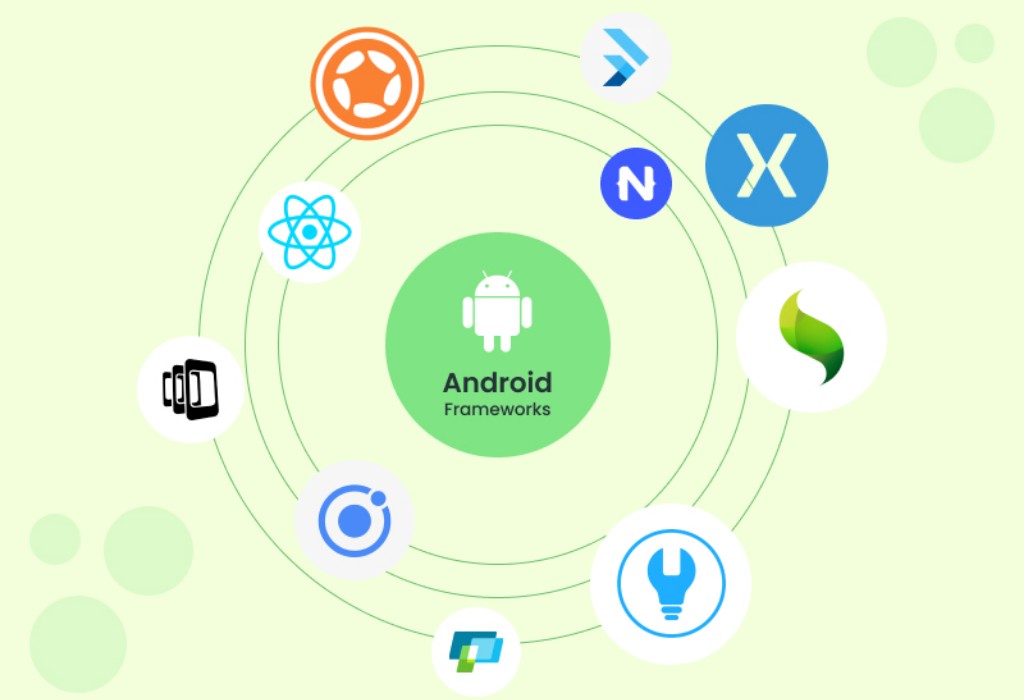With a market share of 6.74% in 2022, Android remains the king of OS worldwide, says Statista. This ever-increasing popularity of Android has led to the birth of multiple frameworks catering to the platform. These frameworks allow developers to do more with less code. They offer faster development cycles and offer better cross-platform support than ever before.
In this competitive OS market, it’s easier for frameworks to lose ground due to inevitable technology upgrades. So which ones are ideal for a growing as well as an established enterprise?
Let’s find out! An excellent Android app development framework is one that offers the following stunning features to the users.
- High-level of customization
- Availability of vibrant community of developers
- Receives continuous updates
- High rendering performance
- Light-weight
- Easy testing & debugging
Let’s explore them in detail.
1. Sencha Touch – Offering a Collection of Rich UIs

Sencha is a cross-platform mobile application development toolkit. It contains user interface widgets, data visualizations, and other functionalities. It enables web developers to build native Android, iOS, and BlackBerry OS applications. Sencha Touch has a large community and supports PhoneGap and Apache Cordova plugins through JavaScript APIs.
A downside of Sencha is its price tag. Its high price isn’t very appealing compared to other mobile app development frameworks. However, if you are planning on creating apps regularly or have more extensive plans, then Sencha Touch is an ideal option to go for.
For example, building multiple apps simultaneously or looking into advanced functionality like offline storage or analytics, Sencha is worth every penny you spend.
2. Solar2D – Earlier Called Corona SDK
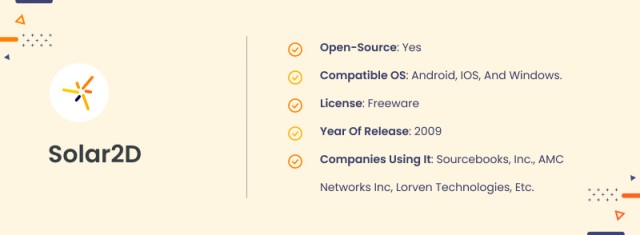
The critical difference between Solar2D and other app development platforms is that its code doesn’t need compiling. It has a scripting language known as Lua, which offers several advantages over Java, including more straightforward coding and fewer bugs.
Vlad Shcherban created this framework with education in mind. Due to its simplicity, it’s easy to learn as well. Solar2D remains on top owing to its smooth development, testing, designing, and business models.
It is used by some worldwide renowned companies, including Adobe Systems, BBC America, Miniclip, and more.
3. React Native – Maximizing Code-Reusability
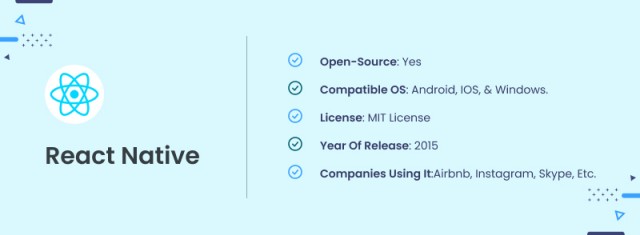
React Native is a free & open-source framework created by Facebook Inc. It allows developers to create cross-platform native apps using JavaScript. Doing so lets developers reuse code between mobile platforms such as iOS and Android and even builds new features. These features ultimately make development easier, faster, and less costly.
Note: Statista lists React Native as one of the most popular cross-platform frameworks, with a developer’s popularity at 38% in 2021. It is second only to Flutter, which has a popularity of 42% among developers.
Even though it’s pretty new compared to other frameworks, it’s already proven itself. It is used by companies like Facebook, Instagram, Airbnb, Walmart, Tesla Motors, etc. Developers use it because they like how its components are defined through regular JavaScript objects instead of XML layout definitions that others use.
4. Ionic – Leverage Command Line Interface
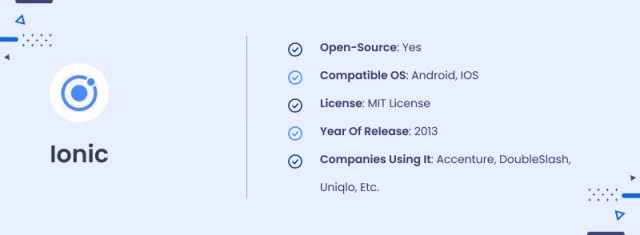
Ionic is a robust open-source framework that allows you to build hybrid mobile apps with HTML5, CSS, and JavaScript. It offers an easy-to-use SDK that supports multiple mobile platforms, including Android and iOS
Ionic developers use tools called Command Line Interface (CLI) and write HTML, CSS, and JavaScript code using various preprocessors like Sass. Ionic comes with native device capabilities built into its core, including access to GPS, camera, offline data storage, etc.
With Ionic’s SDK, you can build web apps that have mobile components. It is done by compiling your website into app pages while running on your desktop machine or deploying it as an app directly to a server before distributing it to users over an app store. It also offers easy integration with PhoneGap Build for rapid app development and testing.
5. Xamarin – Offering Native UI Experience
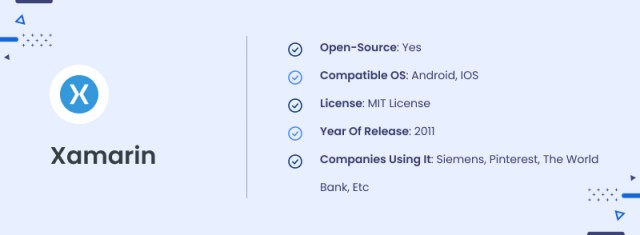
Xamarin is a trusted cross-platform mobile app development framework developers use to build native applications. It combines C# language with .NET and uses Mono runtime, enabling developers to code in their preferred programming language.
The framework uses Visual Studio tools and allows users to use both iOS and Android libraries while sharing business logic, data models, and user interface. It has excellent documentation updated regularly with new information from the developer’s community. These factors make Xamarin one of the top android app development frameworks.
6. Flutter – Enhances Time-to Market Speed
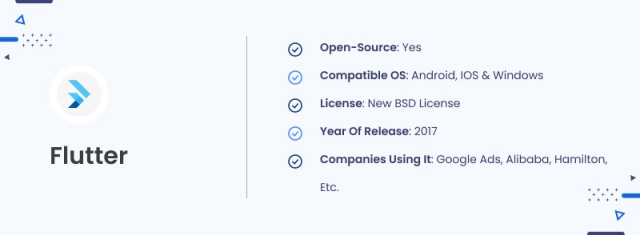
Google’s Cross-Platform solution for mobile app development, Flutter, has gained considerable traction ever since its launch. With an active community, new features every day, and complete support from one of the most reputed companies out there make Flutter a good candidate for the list.
One can make revenue from their created applications with Google Play Store Partner Program. Another great advantage of using Flutter is it makes developing cross-platform applications much more accessible with only one codebase.
7. PhoneGap – Integrate Native UI Functionalities
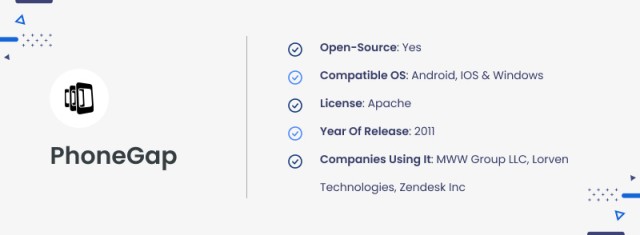
PhoneGap is a renowned open-source mobile application development framework. The framework uses a combination of web technologies like HTML, CSS, and JavaScript to create mobile applications. PhoneGap includes APIs that help you add native functionality to your apps, such as geolocation, camera, and other device features.
Along with many app-building frameworks, it also offers better cross-platform compatibility and makes it easier to develop HTML5-based hybrid mobile apps across multiple platforms, including iOS, Android, etc. All of it makes PhoneGap one of the best android app development frameworks for 2022.
8. AppsBuilder – Leverage Drag & Drop Feature
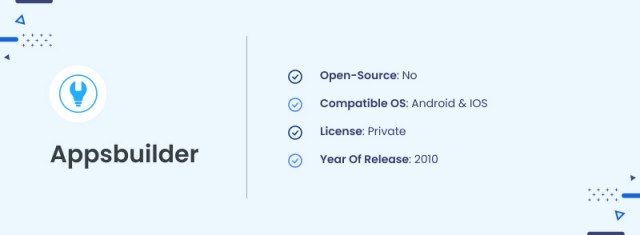
AppsBuilder is an easy-to-use app builder designed for beginners, students, and small businesses. Users can create custom mobile apps with a few simple clicks and basic knowledge of HTML and CSS.
With AppsBuilder, even novices can build cross-platform mobile apps on Android, iOS, and Windows Phone from a single codebase. It is something for which other app frameworks charge thousands of dollars per year.
Moreover, full-featured app templates give you a head start on your project. AppsBuilder is based on simple drag-and-drop technologies. So the developers can perform the following actions with little effort:
- Drag an element onto a device screen;
- Resize it
- Change its color or behavior using easily accessible tools in the sidebar
- Save it as a template if needed.
That’s all there is to it!
9. JQuery Mobile- Simplifies DOM Manipulation
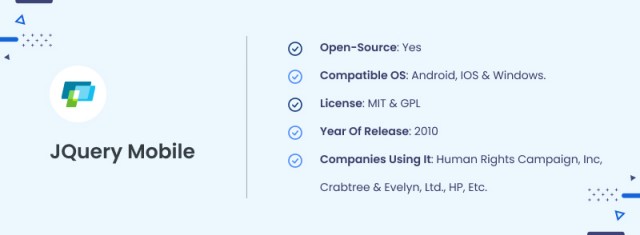
It was released in October 2010, & since then, it has been proliferating. In 2015, JQuery Mobile created a record of being the most used mobile framework. It supports the latest version of IOS and Android devices. Its simple interface makes it a lot easier for developers and designers. Using various online tools allows one to create a responsive app easily.
Although it may look like nothing more can be added to JDoc. However, many versions have been released in the past few years, including additional features like support for newer browsers (IE11), using Google material design color themes and more theme options, etc., along with bug fixes.
10. NativeScripts- Facilitating Quicker Project Development
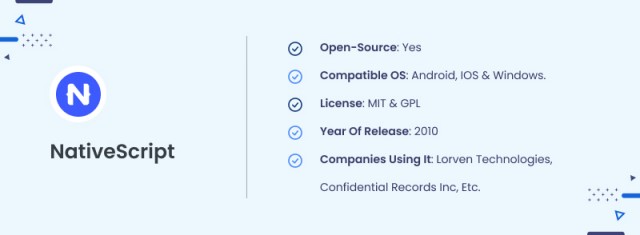
NativeScripts is a renowned framework that enables you to develop apps in JavaScript. It provides several advantages, like that it does not need any browser or plugin, and users also need not install any compiler in their system.
Some of its other key features are writing code in a single language and a framework that can run on any platform. Moreover, NativeScripts offers dynamic loading of native plugins via a designer tool called NativeScript Playground, which gives an interface similar to a design studio.
Over to You
It is impossible to confirm which one of these frameworks will be number one in the next five years, but React Native and Flutter undoubtedly have a bright future.
As of now, their popularity is growing at a rapid pace, especially with enterprise development. However, that does not mean they are ideal for all kinds of projects.
While selecting a framework, it is essential to ensure that the chosen option effectively meets the desired project features. It becomes a critical task when you lack prior experience with these frameworks.
Under such a scenario, you can hire the best android application development company that can help you leverage the ideal framework based on your project requirement.
